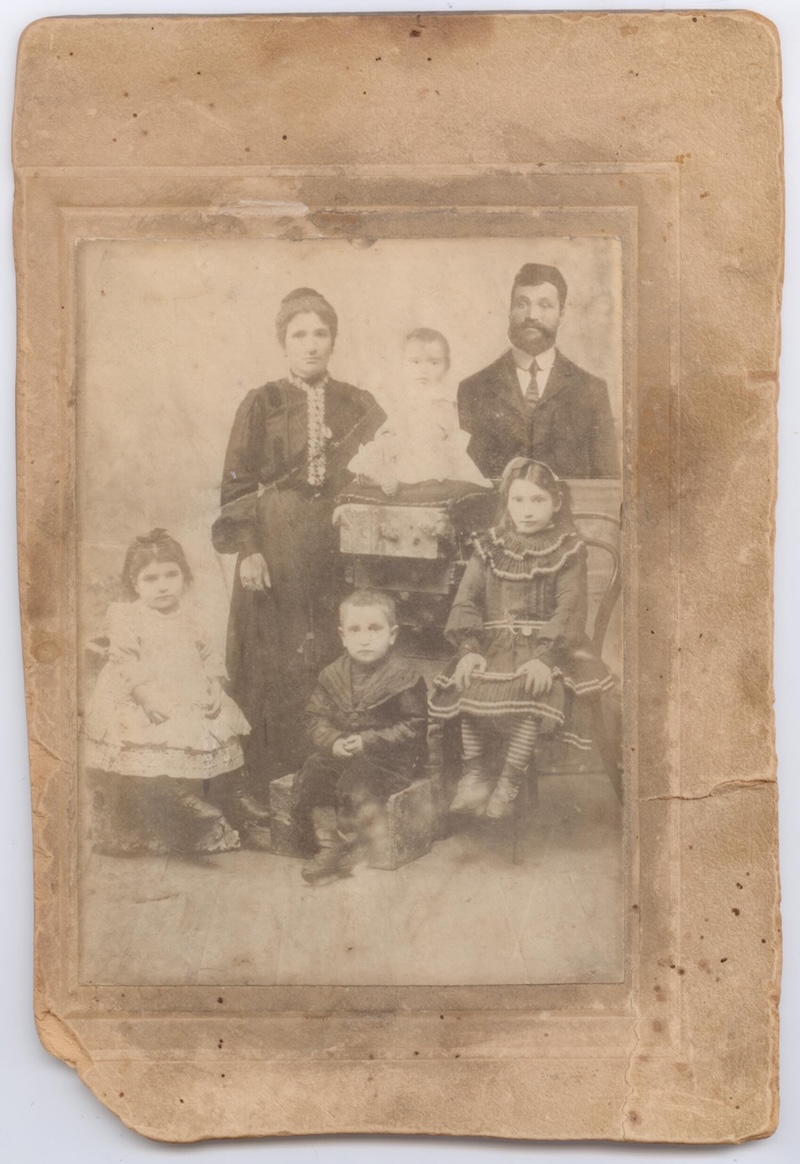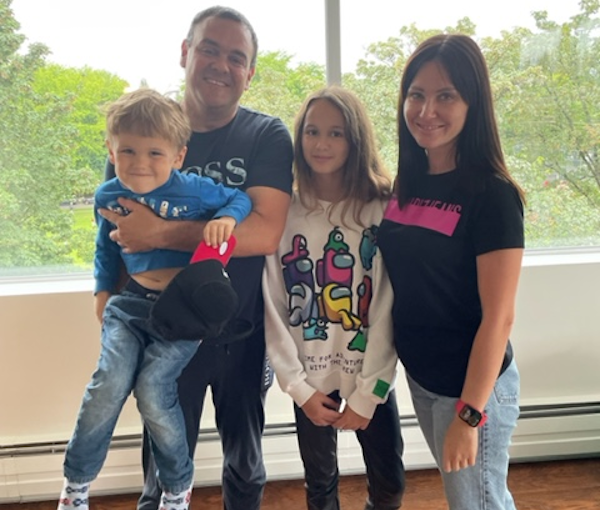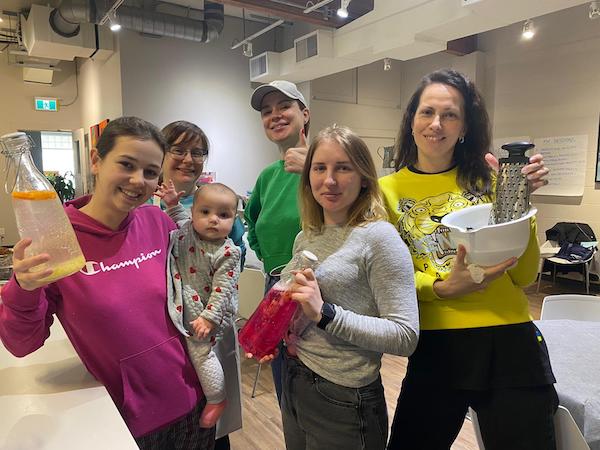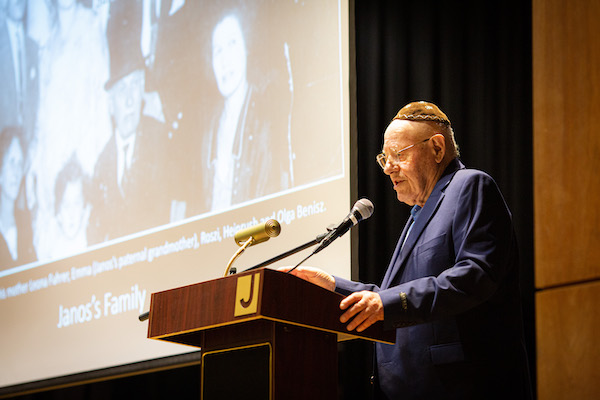In the first few years of 1900, my paternal grandparents – who had been married since 1886 – came to a decision. Economic life in Pinsk was too challenging and a drastic lifestyle change was required. So, in 1905, my grandfather, Yehiel Rubachka, age 34, journeyed alone from Pinsk (then under control of czarist Russia) to find work in Toronto. He knew Yiddish and a bit of Russian, having served in the Russian army for three years. He left behind my 27-year-old grandmother, Liba, and their four young children, Bessie (born in 1899), David (1902), Minnie (1903) and Herschel (1905), in Pinsk Karlin. Today, Karlin might be called a suburb of Pinsk.
On the one hand, Pinsk, with its sizeable and well-organized Jewish population (according to Yad Vashem, 21,819 or 77.3% of the city’s population, in 1896) offered the comfort of the familiar. On the other hand, living conditions were not good. By the time my grandfather left Pinsk, he and my grandmother had buried five children. There were also political and social issues, such as the fact that, in czarist Russia, Jews by and large lived under restrictions: forbidden to settle or acquire land outside the cities and towns, legally limited in attendance at secondary school and higher schools, virtually barred from legal professions, denied the right to vote for municipal councilors, and excluded from serving in the navy or the guards. Not to mention the repercussions of the failed 1905 Russian revolution, and the deaths and damage done by periodic Cossack attacks.
It is not clear what my grandfather’s relocation ultimately meant. For all intents and purposes, entering Canada was fairly easy; he did not need a passport or a visa to enter the country. But did he go to Toronto to test the waters so to speak – perhaps Canada would turn out to be no better than eastern Europe? Or was his plan, from the start, to make enough money to bring over the rest of the family? Or was it all left open-ended? On the birth certificate of one of my aunts, his occupation in Canada was listed as a (humble) rag collector.
In any case, around 1906, my grandparents decided a family portrait was needed. (Since my Uncle Herschel still looks like an infant, this photo was probably produced earlier than the 1910 date my father held to.) The problem, of course, was that the family was based in two distant locations, Toronto and Pinsk. So how was such a picture taken?

According to Rita Margolin, a Yad Vashem historian, glass plate negatives were in use from the 1850s through the 1920s. They were popular with both amateur and professional photographers. In these years before courier and other delivery services, it would have been tricky to safely send glass negatives, they might have shattered in mailing. This suggests that some other method was used for putting together the two photos that became the family portrait.
Margolin further elaborated that a Pinsk photographer named Rendall might have made the composite image, as he was active in Pinsk in 1910. She pointed out, however, that photographers generally displayed their name on the photos they took, and my family’s photo is lacking a signature both on the front and the back side. (It is probably not a good idea with my unskilled hands to search for a signature by separating this very old photo from the cardboard to which it is pasted.) The lack of signature might mean that the photo I have is a copy and not the original.
Early 20th-century photo studios preferred photomontage – the production of images by physically cutting and joining combined photos – to create, for instance, tall-tale postcards. Tall-tale postcards are also known as “exaggerations.” Examples of these kinds of postcards include hilarious old farming photos in which farmers are seen pushing a wheelbarrow or a wagon containing giant harvested onions or enormous potatoes.
According to my father, the late Sidney (also known by his Yiddish name, Sheya) Rubin, z’l, my grandfather was added to the picture. One photographer with whom I consulted agreed that this is a likely scenario, as normally the head of the family would be prominently featured in the front, rather than the back, row of a photo.
In my family’s photograph, my grandmother is standing, facing the camera, straight on and straight-faced. My Aunt Bessie is sitting on a wooden chair while my Aunt Minnie is sitting on what might be a tree stump. My Uncle Dave is sitting on a suitcase. The baby, my Uncle Herschel, dressed in some sort of baby’s gown, sits atop a stack of cases. My grandfather, with a somewhat wistful look on his face, is cleverly placed behind a trunk, with only his upper torso visible.
My grandfather’s family left Pinsk and joined him in Canada in 1911. Sadly, all the relatives who remained in Pinsk were killed in the Shoah. My father’s family settled at Toronto’s 13 Leonard Ave. Between 1880 and 1928, 70,000 Jews left Russian-held territory for Canada.
Four more children were born in Toronto. These included two more aunts, one uncle and my father. Rachel or Rae was born in 1911, Birdie (often called by her Yiddish name Faigel) was born in 1913, Harvey (often called Mo) was born in 1915 and my father was born in 1917. My father’s family, however, did not remain in Toronto. In 1920, they moved to the United States, settling in Chicago. Along the way, the family name was changed to Rubin. My grandfather’s first name was anglicized to Joseph and my grandmother’s first name was anglicized to Elizabeth (or Lizzie). My grandfather became a naturalized American citizen in 1953. By that time, he had been living in the United States for more than 30 years but, still, he signed his naturalization papers in Yiddish.
As a child, I remember visiting the street where my father had lived as a young child. Perhaps surprisingly, the missionaries still had a close-by storefront. According to reports, missionaries had been “working” in the area since the time my grandfather was living in Toronto. Although they apparently succeeded in converting very few Jews, it did not stop them from trying for years on end.
Photoshop and other digital photo editing tools are a great help to today’s photographers. In the early 1900s, of course, computers and such programs did not exist. Yet, in the early 1900s, photographers on two continents managed to make a composite image nonetheless.
Deborah Rubin Fields is an Israel-based features writer. She is also the author of Take a Peek Inside: A Child’s Guide to Radiology Exams, published in English, Hebrew and Arabic.




